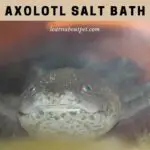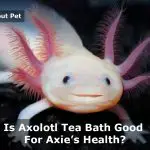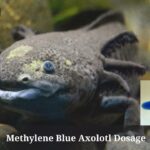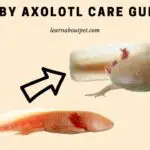Whether an axolotls owner is a beginner in the wonderful adventure of petting axolotls or a long-time enthusiast, it sometimes happens that owners remain worried about certain behaviors of their Axolotls.
One of the main problems related to axolotls is axolotl white spots appearance. It is a fungal infection that is very lethal and should be treated with seriousness. The axolotl with the infection should be separated from other axolotls, as the disease may spread. Then contact the Vet and give salt baths to your Axies.
Axolotls are simply nocturnal and take advantage of the day to rest in the shade of their hiding places. Most of their activity is done at sunset and sunrise.
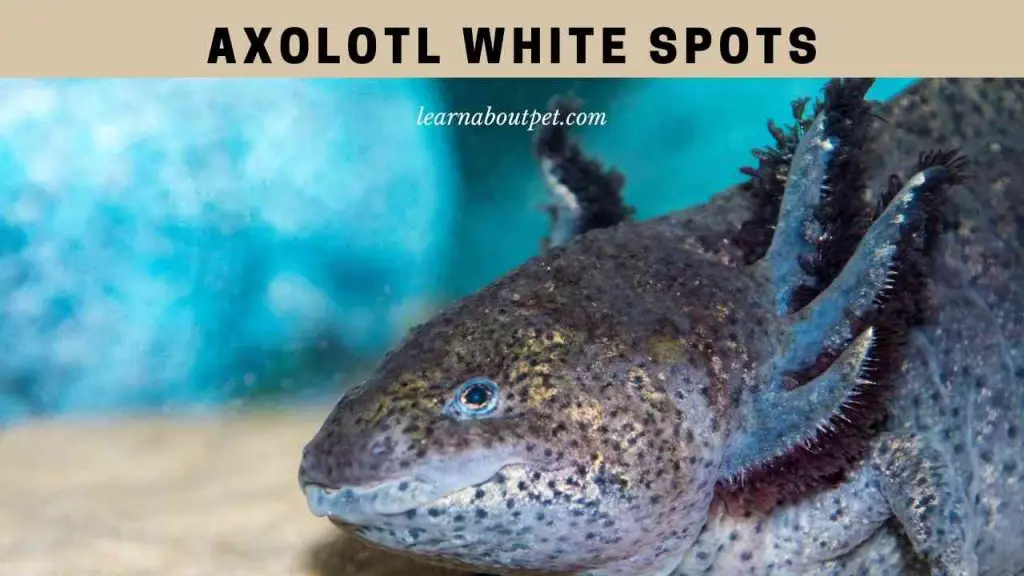
They spend their time on the ground, walking around quietly, occasionally going up to take in the air on the surface. Some are also real acrobats who will enjoy a nap in the plants.
Their behavior in the face of artificial lighting will differ from one individual to another. While some will refuse to come out of their cave for the duration of the lighting, others will not care at all and will lead their lives normally.
The axolotl owner will therefore have to make sure to feed your animals with the lights off to be sure that they will feed properly so that they don’t encounter any diseases due to improper food.
Harmful Indications Of Axolotl White Spots
If an axolotl has white spots the owner may find white cotton-like balls arising on the body of axolotls. Certain axolotls behaviors are indicators of a potential problem. These symptoms shouldn’t be ignored and the owners should take necessary precautions.
- Too frequent surface air intakes
- Very red and/or very nervous animal (apart from feeding and breeding)
- Atrophied gills
- Refusal to eat
- Thinness
- Injury
- Sick axolotl /lost interest
- Peeling skin
- Huge belly
- Cotton ball in the gills
If the owners experience or observe any of these symptoms in the axolotls they should get their pet checked at a vet or isolate the animal in a plastic crate with fresh water that will have rested for 24 hours.
Axolotl White Spots On Body
An axolotls with white spots is a dangerous infection that can spread very fast. It should be treated by the owners as soon as possible. A forgotten pellet or improper maintenance can cause a yeast infection on the gills or the body of your animal.
Symptoms: Appearance of white cottony balls in the gills or opaque patches on the body.
What to do: Check the cleanliness of axolotls terrarium. Something appears to be rotting and you’ll need to find it to prevent your other axolotls from showing the same symptoms. Clean off the floor, hiding places and decor and make sure the pump flow is adequate. Keep the tank temperature below 21 degrees.
The gill fungus will normally go away on its own, treatment is not always helpful. However, if after 48 hours it is still there, the axolotl owners can give their axolotl a salt bath or sometimes even tea bath.
Causes Of Axolotl White Spots
One of the fungi that most often causes yeast infection is Saprolegnia. It develops in the following cases
- water too hot
- the presence of a real root in the aquarium/water with an acid tendency
- food scraps which have not been removed quickly enough and which are mouldy
- side effect due to treatment
- weakened body (injury, for example) or immunocompromised Axolotl
What To Do If I See Axolotl White Spots On Gills
Fungal Infections are very common among axolotls. Some of the fungus namely srelegnia or columnaris are very common fungal infections that lead to the appearance of white spots on the gills or fins or hands of an axolotl.
The axolotl fungus infection should immediately be separated from other axolotls if there are other axolotls as it may spread its infection to other axolotls too.
The fungal infections are promoted in the axolotl environment when the temperatures are cooler. Axolotls require a cooler temperature so that is the reason many axolotl owners complain of fungal infection in their axolotl. This infection is very common among the axolotls.

Where Does Fungus Come From?
In the majority of cases, fungal infections arise due to the tank setup of axolotls. The fungus arises on bare bottom or sand only tanks. However, keeping the axolotl in poor hygiene can also be a contributing factor. There are few unhygienic practises that leads to such problems that include:
- Not changing the water of axolotls tank
- Not cleaning the tank separately
- Not cleaning the artificial plants inside the tank
- Not cleaning the left out food properly
- Not adding water filters inside the tank
How Does The Fungal Infection Look Like?
Fungal infections in axolotls look like fluffy cotton balls on the body of axolotl usually present on the body, gills, or the wound on axolotl’s body.
Even though fungus may not look that dangerous on the body of your pet, it is very dangerous for the overall health and growth of axolotls. That is the reason it is recommended that it should be treated with utter diligence and responsibility.
Are Axolotl White Spots Preventable?
Yes, the white spots or fungal infection on axolotls is preventable if treated correctly. Furthermore, it should be noted that the owners should carefully check if the infection is a fungus attached or is it only a black spot on axolotl, which may be a natural spot but if it is a white cotton-like structure, it surely is an infectious agent.
Axolotl White Fungus Treatment
Treating the white fungus off axolotls include various treatments. The most popular treatment is a salt bath or tea bath. However, these salt baths can be very stressful to axolotls. It is best for the owner to first take a recommendation from the vet. Sometimes when the fungal infection isn’t serious, doctors can provide simple and better options.
The most important thing that an axolotl owner should understand is that they shouldn’t pick out the infection by hand. It not only causes a lot of pain to the axolotl but is also not a very effective treatment.
The most viable and long term solution can be a vet-recommended solution that can be added to water to get rid of the fungus. It should be noted that some solutions are very strong which may burn the gills of axolotl so the owner should keep the axolotl in the solutions tank only for the prescribed time.
After the vet’s recommendation and if possible putting the water tank in direct sunlight for some time can also help axolotls to get rid of the bacteria. This technique is very reliable as it has helped many axolotl owners. Many other solutions are temporary, after which the bacteria may come back again but this is a reliable solution. However, it should also be practised on the recommendation of the vet.
If the owners notice fungal infection on the axolotl and are treating according to the vet’s suggestion, it should also be taken into practice to clean the water regularly of the axolotl that has an infection and separate it as soon as the owner finds out of infections.
Final Verdict – Axolotl White Spots
Axolotls are very popular pets. Many people demand axolotl due to their exotic shapes, cute appearance and always smiling face. However, unfortunately, Axolotls are prone to a bacterial infection that causes white cotton ball-like appearance on the body of axolotl.
Black axolotl with white spots or white axolotl with white spots is an infectious agent that harms the pet. It is dangerous and should be treated with the recommendation of the vet.

First, the infected axolotl should be separated from the other healthy axolotls and then infected Axolotl should be given proper hygienic care like changing the water regularly and cleaning the tank regularly together with bathing axolotl open saltwater or vet recommended solutions. Axolotl should also be given sunbathe as they are also considered helpful.
As a pet lover, make sure to learn about pet more and give your pet hermit crab a good and comfortable life!

Welcome to Learn About Pet. My name is Rajkumar Ravichandran and I love all pets, travel, and amazing food. I write about my passion and personal experience caring for multiple pets in this blog! ❤️
Post Disclaimer
DISCLAIMER: THIS BLOG OR WEBSITE, "Learn About Pet", DOES NOT PROVIDE YOU WITH MEDICAL ADVICE AND IS NOT A SUBSTITUTE FOR MEDICAL ADVICE. ALWAYS GET IN TOUCH WITH YOUR PERSONAL VETERINARIAN AND USE INFORMATION HERE AS GENERAL ADVICE.
The information, including but not limited to, text, graphics, images and other material contained on this website are for informational purposes only. No material on this site is intended to be a substitute for professional veterinary advice, food recommendation, diagnosis, or treatment. Always seek the advice of your veterinarian or other qualified health care provider with any questions you may have regarding a medical condition or for pet food related questions.
